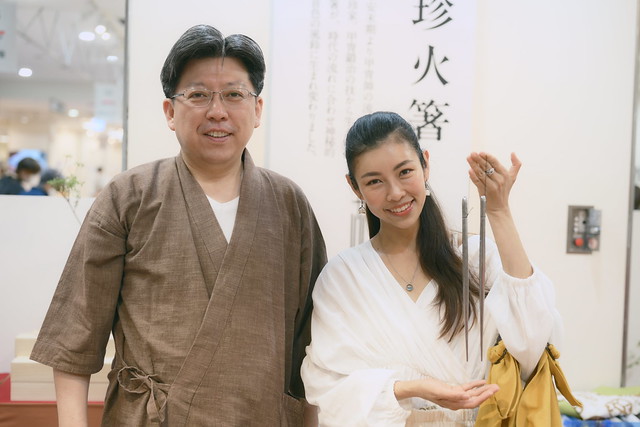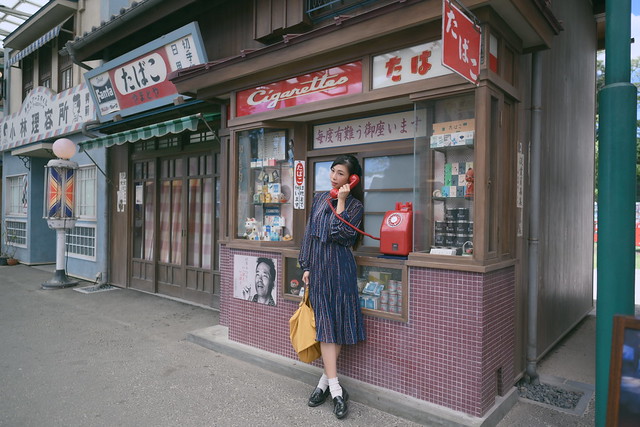For those of you living in Japan, you may be considering getting a driving license so that you can go on that long awaited dream road trip to Hokkaido cruising along gorgeous lilac lavender fields? I know I did!
I decided to write this article because in order to convert my Singapore driving license to a Japanese one, I had gone through days and days of worries and uncertainties, so I hope that this complete guide will ease some of your anxiety for this rather complex procedure. Note that for some of you lucky b***ards here from a list of certain countries (such as part of USA, UK, some European countries, Taiwan, Australia and New Zealand, etc), you are exempted from both the knowledge test and driving test and can have your license converted pretty easily. *jelly* :’) However many of us from ASEAN countries including Singapore and Malaysia are required to go through the entire process.
First of all, a little background story about my intention for the conversion.
I had been holding a Malaysian driving license all my life until I moved to Singapore, and converted it to a Singapore equivalent. In March 2020, I moved to Tokyo when the pandemic hit, and as you know, you are required to drive in Japan with an international license, which you could easily apply from your country before visiting Japan. However, mine has expired, so I haven’t been able to drive in Japan. What’s even more worrying was that in May 2021, I realized that my Singapore driving license itself was expiring this December! Seeing how highly unlikely for me to return to Singapore to renew my driving license, the only way for me to still retain the qualification to maneuver a road vehicle without being sent to the prison a is to convert it into a Japanese driving license. And I did! And boy was it an anxious months-long affair.
Note that once your existing foreign license has expired, you are required to enroll in a driving school from ground zero, which is a very, very tedious, time consuming and expensive process in Japan. So, I had about half a year to have my license converted before being disqualified into a complete noob all over again.
Well, the thing is that converting your foreign license is not so much a straightforward process, even though it is a much, much simplified version compared to acquiring a fresh one from the start.
The procedure of converting a foreign driving license into a Japanese one is called “Gaimen Kirikae” (外免切替), short for “Gaikokumenkyosho Kirikae” (外国免許証切り替え), namely, foreign license conversion.
Steps to converting foreign driving license to a Japanese driving license
So here are 4 steps you need to complete before you can obtain a Japanese driving license and here they are:
Step 1: Have your existing license translated at JAF
Step 2: Prepare all necessary documents
Step 3: Take the traffic rule knowledge test & aptitude test
Step 4: Take the driving skill test
Complete!!
Sounds pretty simple, no?
Well, given that the getting a Japanese driving license is pretty popular among the foreign community, a reservation to get your driving test done could takes months. So you may want to time your procedure carefully and give yourself ample time before your existing license’s expiry date.
Another thing is that, there have been so many horror stories online saying the Gaimen Kirikae is more difficult than getting your 4-year-old to eat her green peas that some people had to repeat it 8 times before they pass. (Seriously. I had followers telling me it took them 11 times…) There were also rumors that the Japanese examiners purposely fail all the gaijins so that they can keep paying… you know…the typical convenient excuse we use to fit our “Japan is racist” narrative =).
After going through the entire experience first hand, I can assure you that if you drive as usual like you do back in your country (especially Malaysia lol sorry), you WILL fail. Maybe again and again. In fact, only 2 out of 7 of the applicants, including myself, passed on the day of my examination. The rest failed miserably, some on their 4th time. A Filipino lady finally passed on her third attempt and I was the only one who passed on my virgin driving test in Japan. And I think I know exactly what went wrong with some and what I did right.
So, if you are terrified reading this far, don’t worry. Here I am, to help you skip the nightmare of having to retake this dreadful test over and over again, and guide you to pass your Gaimen Kirikae exam ON FIRST TRY. Speaking from first-hand experience. 🙂

Let’s start with the procedure, shall we?
Step 1: Have your existing license translated at JAF
First you will need to have your existing driving license you obtained from your home country translated at Japan Automobile Federation. As I live in Tokyo, I went to the one near Shiba Park in Minato ward.
There’s no appointment needed and you will need to bring relevant documents such as your driving license and a copy of your residence card. Check this link for all the detailed information you will need from JAL’s official site. The translation fee is JPY3000.
Due to the current situation, you will not be receiving the translation copy immediately. The document will instead be sent to your residence address in a few days. I think I received mine 3 days later. Pretty quick!
I know this article is about getting a driving license, but you know me and I can’t help but insert a tiny bit of Tokyo travel PR right here. Since Shiba Park is just around the corner, why not take a leisure stroll and admire the eternally mesmerizing view of Tokyo Tower?

This is a pretty unique angle to admire Tokyo Tower at!

If you come in May, you may even enjoy the romantic sight of it being framed in roses!
Also, if you are a Malaysian like me, know that there’s a Malaysian cafe right down the road from JAF, which I accidentally discovered as I took a random walk in just a general direction.

Man, Tokyo is just so full of surprises isn’t it?

Aunty and Uncle are both from Penang. Had a good chat in my long-rusty Malaysian accent. It was really nice. CKT needs more wok hei, though.
Step 2: Prepare all necessary documents
Alright. So while you are waiting for your translated copy to arrive, you may start collecting all the documents needed for the next procedure:
- License translation (which you have applied)
- Your existing driving license (expired ones are invalid, be careful!)
- Passport
- Residence Card
- An original resident’s certificate juuminhyou (住民票)
- A photograph (the usual one you can take from those omnipresent photo booths)
The documents are pretty standard and you can just photocopy all of them, except for #5, which you need to go to your respective city hall (区役所) and pay JPY300 for one copy. If you have lived in Japan I’m sure you know the drill.
Another tricky thing you need to note is that you will need to prove that you have stayed in the country where your license is issued for at least 3 months. Make sure you can prove that from your passport, so bring old ones if needed. Alternatively, I was told that I could provide pay slips or utility bills as proof as well.
Step 3: Take the traffic rule knowledge test & aptitude test
Ok here comes the more serious part! You will need to visit a Driver’s License Center in your prefecture. In Tokyo, there are two centers: Samezu Driver’s License Center in Shinagawa ward, and Fuchu Driver’s License Center, in Fuchu city. Samezu is waaaaay closer than Fuchu to me, however I was told that due to high demand, it is unlikely to secure an appointment for the driving test within the next 2 months. Fuchu is much quicker when it comes to appointment-making apparently.

Note that you can just walk in to do your traffic rule knowledge test and aptitude test without an appointment, although you may have to wait but it can be done on the same day. Once you pass (and likely you will), you will have to book the appointment for the driving test at the SAME center. As I was very nervous about my expiring Singapore driving license and want to get it over with as soon as possible, I have opted Fuchu as the center I will be going.
1.Traffic Rule Knowledge Test
When I was reading this up online, everyone says that it is a piece of cake – that you will pass as long as you have some sort of common sense within you, which some of us Malaysians arguably lack when it comes to being a competent driver. You are able to do it in your preferred language so you don’t have to worry about not knowing any Nihongo. Honestly, it was indeed very easy. There are 10 questions you will need to answer and they are all YES/NO answer. Although there were some tricky ones, the passing mark is 7 out of 10. Easy peasy.

I suggest you purchase the booklet called Rules of the Road, which is available at JAF during Step 1. A quick revision will allow you to familiarize yourself with traffic rules that we have long forgotten or ignored on purpose.
2. Aptitude Test
This was a super quick procedure. It is basically an eye-sight check. Just line up at the counter, and perform a couple of optical test you have done before at an optician, stating the direction of the “C” you see and a couple of color blind test and you are done.
After these two test, you will be given an appointment card to schedule your actually driving test on an appointment machine. I went to Fuchu for the above two tests on May 12, and was able to secure my driving test 6 weeks later, on 24 June.
Now I have 6 weeks to prepare for the exam!
*Extra Step: Practice, Practice, Practice
One may want to just chill and wait until the exam day and just leave it all to fate. But I knew that if I did that, I would fail miserably. First of all, I have not driven for more than 2~3 years, given how I just conveniently Grab-car everywhere when living in Malaysia and Singapore. And secondly, I’ll admit you are probably have a higher chance staying alive if you don’t be in the same car as me while I hold the steering. Seriously.
As such, I have decided to have some form of driving practice prior to the exam.
Naturally, if you don’t hold an international license, there’s no way you could drive in Japan with the existing license. And the only means of getting yourself familiar with the roads of Japan is to actually enroll yourself in a course at the driving school.
Note that the driving test of Gaimen Kirikae is an ultra-simplified version of the actual test of a normal driving license (we are SO lucky!!), as there’s no on-the-road, it would actually be best if you practice it at an actual driving course. And that’s what I did.
Practice at Driving School’s Driving Course
Thanks to the search engine, I found and booked an appointment with a private instructor from a driving school to practice at a driving course nearest to my place, and it doesn’t come cheap! An 1-hour practice course will set you back anywhere around JPY7000~JPY9000, excluding the rental fee of the driving course, which is usually around JPY2000. So a one-hour practice can easily be over JPY10,000.
On hindsight, I cannot stress how important this is, because the driving skill test’s main purpose is, in contrary to what its name suggest, to evaluate how well you are able to adhere to Japanese traffic rules and regulations, rather than showing off your double parking skill and how you can gostan into a small one-way lorong to avoid traffic jam (Hi Malaysians you know what I am talking about here).
To tell you the truth, at the end of my first one-hour practice session, I was so bummed I was almost in tears.
Why? It was SO MUCH more difficult than I imagined it to be. I proudly got my first driving license since I was 16 so I have literally like decades of experience driving, yet I have never felt so dejected like I did today! Back in Malaysia I was so used to driving intuitively that it has hindered me from being able to respond to every little detailed instruction. The entire one-hour was a blur and I was panicking while my instructor yelled at the assorted dangerous stuff I did (which is totally safe to do in Malaysia lol) while I was forgetting to signal and 目視 (blind-spot checking) and steer straight and keep a close 60cm from the left and keep really left and stop completely for 3 seconds and not drive over the diamond shape and pump the brakes twice and not to pump the brake while turning and signal and 目視 again oh my Cheesus…
Does any of these sound familiar to you?? If you don’t know what the hell I am talking about here, make no mistake that you will probably fail the exam. And you only have yourself to blame for not doing enough homework.
Every. Single. Thing. That I thought was common sense, was NOT, in Japan. Apparently. I felt like I have already failed by the time I walked out of my instructor’s car.
That night, I booked a second practice with my instructor immediately, and then I also booked a practice course at Fuchu Driver’s Lincense Center – the ACTUAL COURSE that will be driving on. And that was probably the wisest thing I’ve done. Keep reading on!!
Practice at Examination Center’s Driving Course
Alas, I wasn’t the only smart cookie by thinking of doing so. Everyone else are, too. The good news is, you are actually allowed to book the actual exam location for your own practice. The bad news is, it is so ridiculously popular that you have to book like a month in advance, which is like giri-giri (just barely in time) for my exam. I called first thing in the morning in mid May, and on the 876241864th call, I was lucky enough to book myself a spot at Fuchu Center! The fee is JPY2200 for a one-hour practice, however you will have to find and contact your own instructor for the practice, so that’s another few thousand yen added to the bill.
There are a total of 4 different course routes for Fuchu Center, and one person is limited to a one-hour practice only, so time is really gold. Go through all A,B,C,D course route and familiarize yourself with the environment. The S-Curve was the most challenging for me so we took our time to go over it again and again. The advantage of practicing at your exam center is that it is like a rehearsal before the real deal. Your instructor will remind you of mistakes you made and remember to take notes afterwards so that you won’t repeat those deadly blunders that will set you back those precious points.
One hour had never passed so fast in my life. I wish I had more time. I also wish I could post some photos here but unfortunately no photography is allowed in the entire center so you will have to be there to see it for yourself.
Verdict
After the Fuchu practice, I actually paid for one final practice at nearby driving course with the same instructor. I only finally felt confident enough that there’s a chance I’d pass after finishing my third practice, and my instructor told me that I had improve so, so much!
I’d be honest – it costs quite a fortune to hire an instructor for practice. I spent close to JPY30,000 in total for 3 rounds of practice, and for those of you who are more confident in handling a vehicle, you may just need it once. So if you calculate, it is actually cheaper to fail 8 times than to practice 3 times prior to the exam lolol, but time is too precious for me to waste and I don’t think I have the heart of an iron to face the rejection over and over again. My goal is to 一発合格 – pass at one shot!
Step 4: Actual Driving Test
The day has finally come.

I spent weeks having イメトレ(image-training?! basically like to visualize and simulate the driving experience in my head) at home, nights over nights until I was confident enough to hope for a chance to pass it at one shot. I would sit on my bed, miming to myself putting on the seat belt and adjusting the rear mirror, etc, in the exact order. And then I would go through my notes about the careless mistakes I often made.
24th June, I woke up 6AM, arrived super early at Fuchu center. A line has already formed at 7:45AM. I registered myself at the Gaimen Kirikae counter, and waited for my turn along with 6 other examinees all hailed from different Asian countries. Indonesia, China, Sri Lanka, Philippines, India, Myanmar, Malaysia (me!).
A tall, serious-looking gentleman in his (traffic police? or something alike) uniform approached us. Our names are called in a random order, and I was the 5th examinee of our group. We were then led downstairs to the exam spot.
Very kindly, the examiner explained to us in very simple Japanese that the things that the examinees often overlook and mistakes often made. He obviously did that so that all of us had the highest chance to pass, and not fail, as opposed to what all the other internet articles are saying. I breathed a sigh of relief, because to be honest I kept having the image of this stony-faced ojisan keeping eerily quiet the whole time waiting for the chance to screech “FAIL” on his paper while you ram into the curb. It looked like we were in good hands.
The deal is that you will need to secure 70 points out of 100 to be able to pass the test. And different points are deducted for various mistakes made – from 5 points to 20 points. If you go over the curb and continue driving, it is an instant termination of exam so make sure you never, ever do that.
Anyway, the exam started in the arranged order. It was so tensed I could almost hear everyone’s racing heartbeat. We had some small talks and that was how I found out that one guy have had failed 3 exams and doing his fourth today. 4 of us noobs were doing it for the first time, and the Filipino lady was having her third. Looks like passing at first shot is kind of a miracle, huh?
And off they went.
The first lady failed.
The second lady failed.
The Filipino lady passed!
The fourth guy, who was having his 4th test today, failed. He looked so crestfallen he wasn’t even n the mood to talk to any of us. 🙁
And then it was my turn. *gasp for air*
I checked the front and back of the car, got in, set my position, mirror and everything, and started the engine.
“Yoroshikuonegaishimasu!” I greeted the examiner. He greeted me back, and told me it’s okay to go very very slow.
And then it was a 全集中!府中の呼吸!!(Full Concentration! Fuchu’s Breathing!) 10 minutes. I was aware that the examiners was scribbling some stuff on his notepad, I just continued anyway until the end. I remember during my most dreaded S-Curve, the examiner actually was giving me quiet hints with gestures, and that really, really helped, a lot. He obviously did not want to see us fail.
After stopping my car, the examiner continued scribbling on his note without looking up, and there was a breathless silence in the air…
『よく練習してきたから合格です。』(“You passed because you practiced well”.) he then said to me.
Oh…
I was waiting for him to spend 5 minutes to tell me what I did wrong, like he did to the previous 4 examinees.
And then, he gave me an orangey slip, which says “You are to pass Today’s test”.

(I have no idea why the T in today is capitalized, maybe because they expect us to fail on so many other day that Today is such a special, triumphant day worth celebrating.)
『練習してきたからね。』(Because you practiced.) He repeated again, this time looking at me. My eyes started to welled up…
I was happy, and touched. I thanked him profusely and got out of the car.
Hold on a sec… wait what??
How did he even know that I practiced?? We barely had any exchanges other than the yoroshikuonegaishimasu at each other at the start!!
And then it hit me. I realized what the people who failed before me had in common. Even though they have had multiple exams done, they did not go through a formal practice (as they told me). It must have been was so obvious that I followed exactly what my instructor told me to, compared to other who had no experiences in the drills and went straight, weaponless, to the battlefield. There must have been a big difference that he immediately recognized it with his trained eyes.
My effort was acknowledged. I don’t know why but that meant so much to me, literally like a senpai noticed me moment… I am thankful.
It dawned on me that Japan doesn’t care if you can bend a spoon with your mind or vomit glittery rainbows at will. Japan cares if you care. The entire procedure may feel way too stringent and rigid and perhaps not the most efficient, but that’s very Japan. If you have had any sort of business exchanges in Japan, you already know that. Every detail matters, every effort counts. We cannot expect to keep receiving a one-way perfectly organized system and carefully crafted thoughtfulness from every aspect of Japan without returning any ourselves. On a societal level, it may look like all you need is to follow the ridiculously inflexible rules. On an individual level however, more often than not, Japan cares if you are sincere in learning and being a kind, rule-abiding resident, which is more important than your MENSA score and ability to Tokyo-drift. At least least that was what I felt though my experience with this kind examiner.
Anyway. Once you get your orange slip, go back to 3rd floor counter 31 and wait for your name to be called. About an hour later, you will be returned your documents, go to 1F to take a photo for the license and wait for about another hour, and proceed to a hall in 2F to receive your license, at last!!

Congratulations. You are now eligible to control a four-wheel on the roads of Japan.
Getting your foreign license converted in Japan is not exactly the easiest, but it’s not as hellish as many internet articles described it to be. Just like going through many formal procedures in Japan, all you need is to follow the instruction and be (maybe a little extra) prepared. In my case, having practiced in advance eased my mind and gave me the needed confidence boost to not pass out in the exam course haha.
I hope you will be able to pass your driving test at first try, too. Good luck!!
And if you read this far, here’s a small reward for you. Yeap, new spot!
Since we came all the way to Fuchu, let’s explore the very hidden gem of Fuchu city called Kyodo no Mori Park, and just like Shiba Park I mentioned earlier in the post, seasonal flowers are blooming.

I took it as a little sweet treat after going through all these hassle. Chofu city, which is next to Fuchu, is pretty cool, too. I visited a couple of years ago in a taxi, and it was lots of fun.
Maybe next time I’ll just grab a car and drive myself there! 😀
PS: If you enjoy this article or find it helpful, it would mean the world if you could help me support Japan by buying a daikon!














